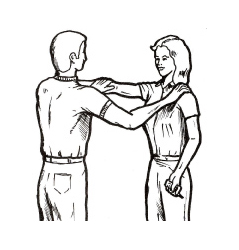 Dr. Waugh uses Applied Kinesiology as one of her chiropractic techniques. Kinesiology refers to the study of movement. It is a multifaceted field of study in which movement or physical activity is the focus. Applied Kinesiology is best described as using muscle testing as a diagnostic tool to augment the examination skills that a health care professional has learned. These findings then allow an integrated approach of different therapies that are appropriate for the patient.
Dr. Waugh uses Applied Kinesiology as one of her chiropractic techniques. Kinesiology refers to the study of movement. It is a multifaceted field of study in which movement or physical activity is the focus. Applied Kinesiology is best described as using muscle testing as a diagnostic tool to augment the examination skills that a health care professional has learned. These findings then allow an integrated approach of different therapies that are appropriate for the patient.
Applied Kinesiology (AK) was founded in 1964 by the American chiropractor George Goodheart who practiced in Detroit, Michigan. AK is now used by chiropractors, osteopaths, medical doctors, dentists and others with a license to diagnose. Dr. Goodheart found that evaluation of normal and abnormal body function could be accomplished by using muscle tests. Since the original discovery, the principle has broadened to include evaluation of the nervous, vascular, and lymphatic systems, nutrition, acupuncture, and cerebrospinal fluid function.
In general, the applied kinesiologist finds a muscle that tests weak and then attempts to determine why that muscle is not functioning properly. The practitioner will then evaluate and apply the therapy that will best eliminate the muscle weakness and help the patient.
These therapies can include the chiropractic adjustment, nutrition, cranial adjusting techniques, and manipulating reflex points on the body related to the weak muscle to strengthen it. And in some cases testing for environmental or food sensitivities by using a previously strong muscle to find what weakens it.
AK uses the triad of health – chemical, mental and structural factors to attain the proper balance of the major health categories.
A pilot study was done to determine whether subjective muscle testing employed by AK practitioners could determine those individuals with specific hyperallergenic responses. Seventeen subjects were found positive on AK muscle screening procedures indicating food hypersensitivity (allergy) reactions. Blood tests were performed for hypersensitivity reactions. The blood tests confirmed 19 of the 21 food allergies (90.5%) suspected based on the AK muscle testing procedures.
A French study was performed which measured the electrical activity in muscles. It established that there was a significant difference in electrical activity in the muscle, which corresponded with the difference perceived of “strong” versus “weak” muscle testing outcomes by AK practitioners. It further established that these outcomes were not attributable to increased or decreased testing force from the doctor during the tests.
In other words, muscles that are weak have different electrical activity than muscles that are strong. And, this had nothing to do with how much pressure the muscle tester used to test the muscles.
Furthermore, muscles that are weak do not “lock” on testing. They give and continue to give with increased pressure. So, a strong muscle is one that “locks” and a weak muscle is one that does not “lock” or gives way. These weak muscles can then be made to “lock” with the proper therapy. This allows your body to function better and to get rid of pain as the muscle is now strong or “turned on” as it should be. More on this in the next newsletter.











